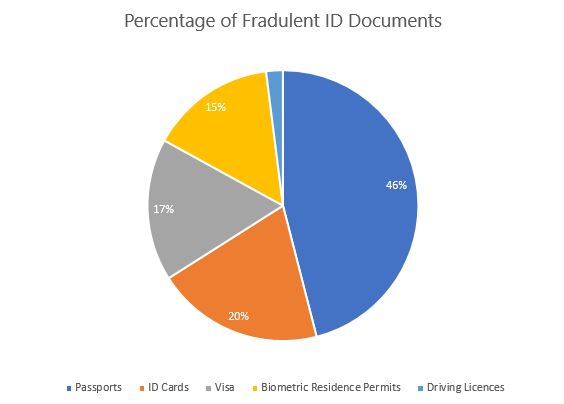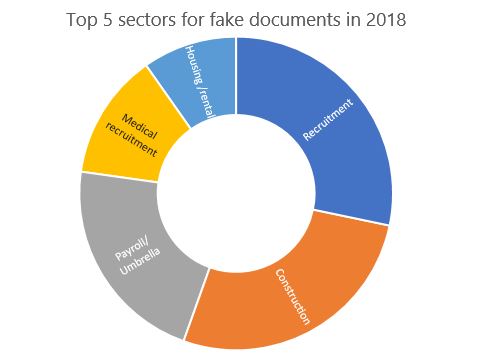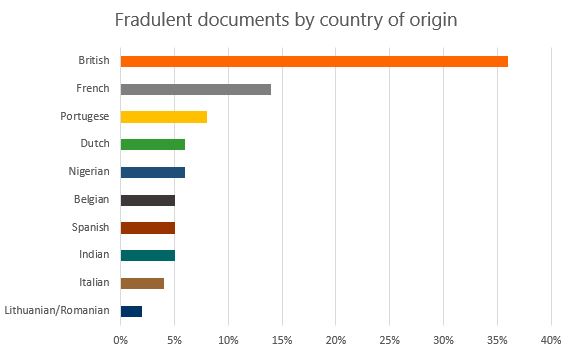Our view of fraudulent identity documents in 2018

If you follow our blog, you’ll know that at TrustID, we’re really keen on gathering and analysing data around document checks, including trends across different industries and fraudulent document types. With another year of data captured, in this blog, we summarise our annual findings for 2018 and compare them with trends from 2017.
In 2018, the number of businesses relying on our checking services has continued to grow significantly, across both the public and private sectors. In this blog, we’ll look at data from our customers in the private sector.
What sort of fake documents did they find?
In 2018, the number of fraudulent documents seen by our helpdesk team grew by 55% and our customers identified and shared hundreds of fraudulent identity documents when making Right to Work, Right to Rent and Counter-fraud checks. The fraudulent ID most commonly seen by our helpdesk this year, as last year, was passports, which made up almost half of all fake documents. Here’s a breakdown by fraudulent document types:

Which sectors found the most fake identity documents in 2018?
The sectors which refer the most fraudulent documents to our helpdesk team continue to be recruitment, construction and payroll/umbrella. New for 2018, we’ve seen an increase in the number of referrals from housing providers and rental companies as they carry out Right to Rent compliance checks.

Where are fake documents coming from?
In 2018, we’ve seen fraudulent documents purporting to be from 39 different countries. Across our private-sector customers, the top 10 countries are featured below. This list pretty much matches the 2017 report except for the emergence of Lithuanian / Romanian documents in 2018.

Conclusion
As our customer numbers continue to grow, and businesses working in different industries start adopting our technology, we’ll carry on analysing trends but our findings from this section of data show that the risk of seeing fraudulent ID documents in the private sector continues.
The highest false document detection rates continue to appear in low-cost labour and high turnover employment sectors such as recruitment, construction and non-clinical healthcare
The most common nationality of document that we encounter continues to be from the UK and there has been a significant increase in the amount of false BRPs that we’ve detected.
Our customers are seeing documents from 39 different countries and it continues to be a challenge for businesses to train staff to be document experts on this breadth of different identity documents.
For more information please contact us or follow us on LinkedIn.
Want to find out more?
Our ID validation service can help you with compliance by making quick, consistent checks on applicants.
Why not find out how we could help you?
Sign up to receive updates
Receive notifications from TrustID direct to your inbox. Simply fill out your email address in the form below.
Want to find out more?
We’d be really happy to chat through your requirements and offer advice on the best service for your business.
Tel: 0118 466 0822 or email us.
Request a callback


